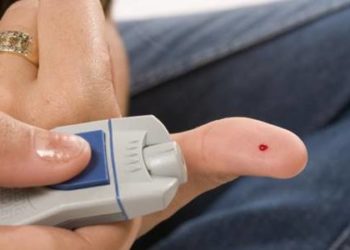Seasonal temperature variations may affect glucose tolerance in pregnancy
1. In a prospective cohort study of over 7000 glucose tolerance tests (GTT) of pregnant patients, GTTs performed in the winter were associated with lower 1-hour and 2-hour glucose results compared to tests performed in the summer
Evidence Rating Level: 2 (Good)
Study Rundown: Gestational diabetes mellitus (GDM) is the most common complication of pregnancy affecting approximately 2 to 4% of all pregnancies. The diagnosis of GDM is made by abnormal 1-hour and 2-hour serum glucose levels during an oral GTT. Previous observational studies have demonstrated differences in blood glucose levels with variations in ambient temperatures. The purpose of this study was to elucidate the effect of ambient temperature variations on the diagnosis of GDM. The study prospectively analyzed the results of over 7000 GTTs to assess the effect of different seasons on the prevalence of GDM. At the conclusion of the study, the 1-hour and 2-hour GTT results were significantly lower in winter compared to summer; however, there was no clinically significant change in the overall prevalence of GDM between seasons. The results of this tests support the hypothesis of a potential effect of ambient temperature on glucose tolerance in pregnant patients, which may lead to under-diagnosis in the winter and over-diagnosis in the summer. The study is strengthened by the large sample size as well as a population that is ethnically diverse. However, the study was taken in a city with a temperate climate, and thus, the results may not be generalizable to other climates with different seasonal variations. Additional large, prospective trials are warranted to further elucidate this association.
Click to read the study in Diabetes Care
Relevant Reading: Variation in glucose tolerance with ambient temperature
In-Depth [prospective cohort]: This was a prospective study that analyzed the results of 7633 GTTs over a 3-year period in Wollongong, Australia. The main exclusion criteria included women with known diagnosis of type 2 diabetes mellitus in pregnancy. The diagnosis of GDM was made based on the World Health Organization criteria established in 2010. Results from the fasting, 1-hour, and 2-hour blood samples were compared at mean monthly temperatures at 9 am in the morning. At the conclusion of the study, during the winter, the median 1- and 2- hour glucose results were significantly lower than the overall results during the summer (p < 0.0001). The prevalence of GDM was 29% higher during the summer and 27% lower during the winter at the 1-hour diagnostic level when compared to the overall prevalence (p = 0.02). There was no significant seasonal variation seen in the prevalence of GDM based on elevated fasting glucose results alone (p=0.35).
Image: CC/flikr/TipsTimesAdmin
©2015 2 Minute Medicine, Inc. All rights reserved. No works may be reproduced without expressed written consent from 2 Minute Medicine, Inc. Inquire about licensing here. No article should be construed as medical advice and is not intended as such by the authors or by 2 Minute Medicine, Inc.







